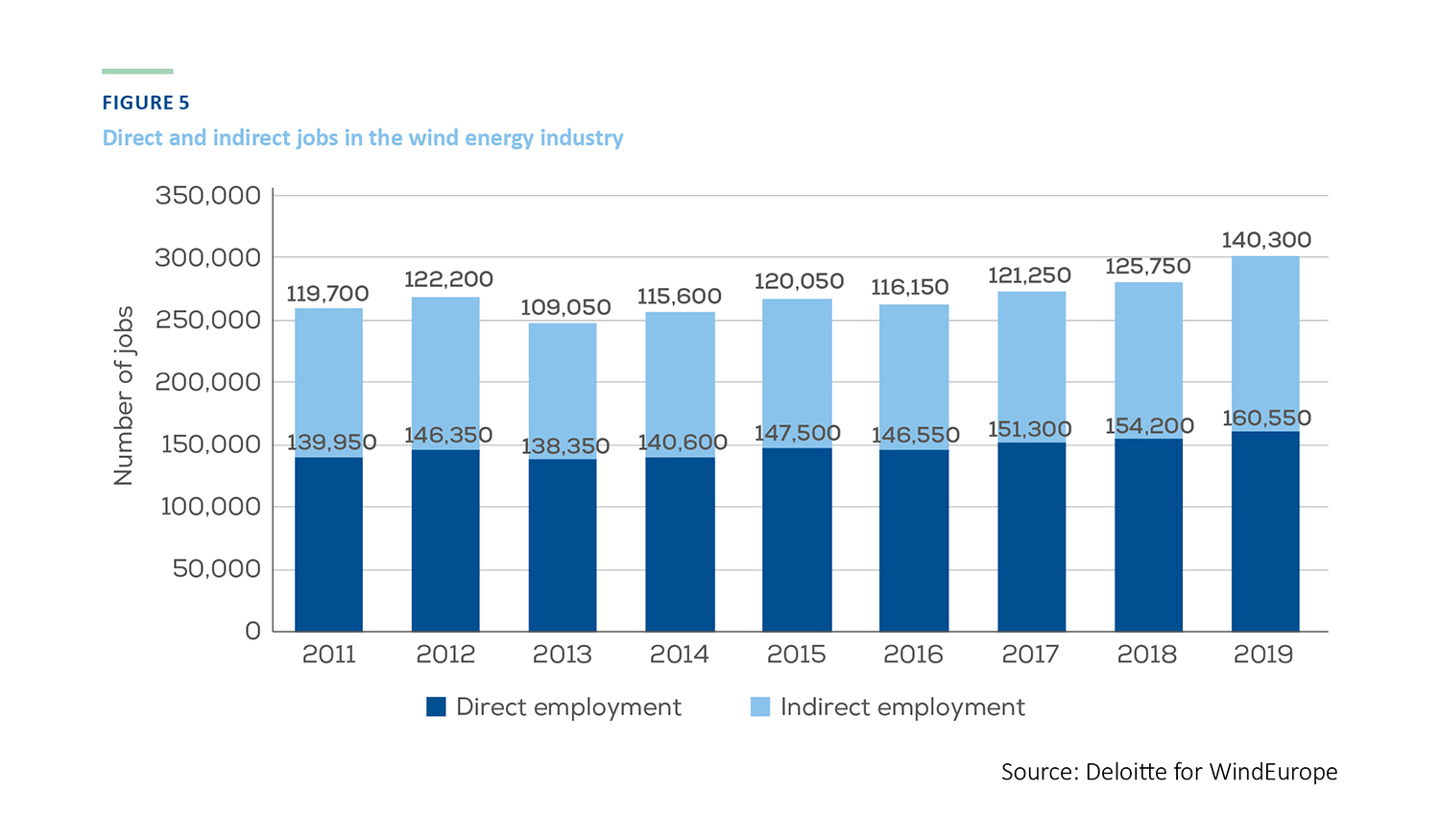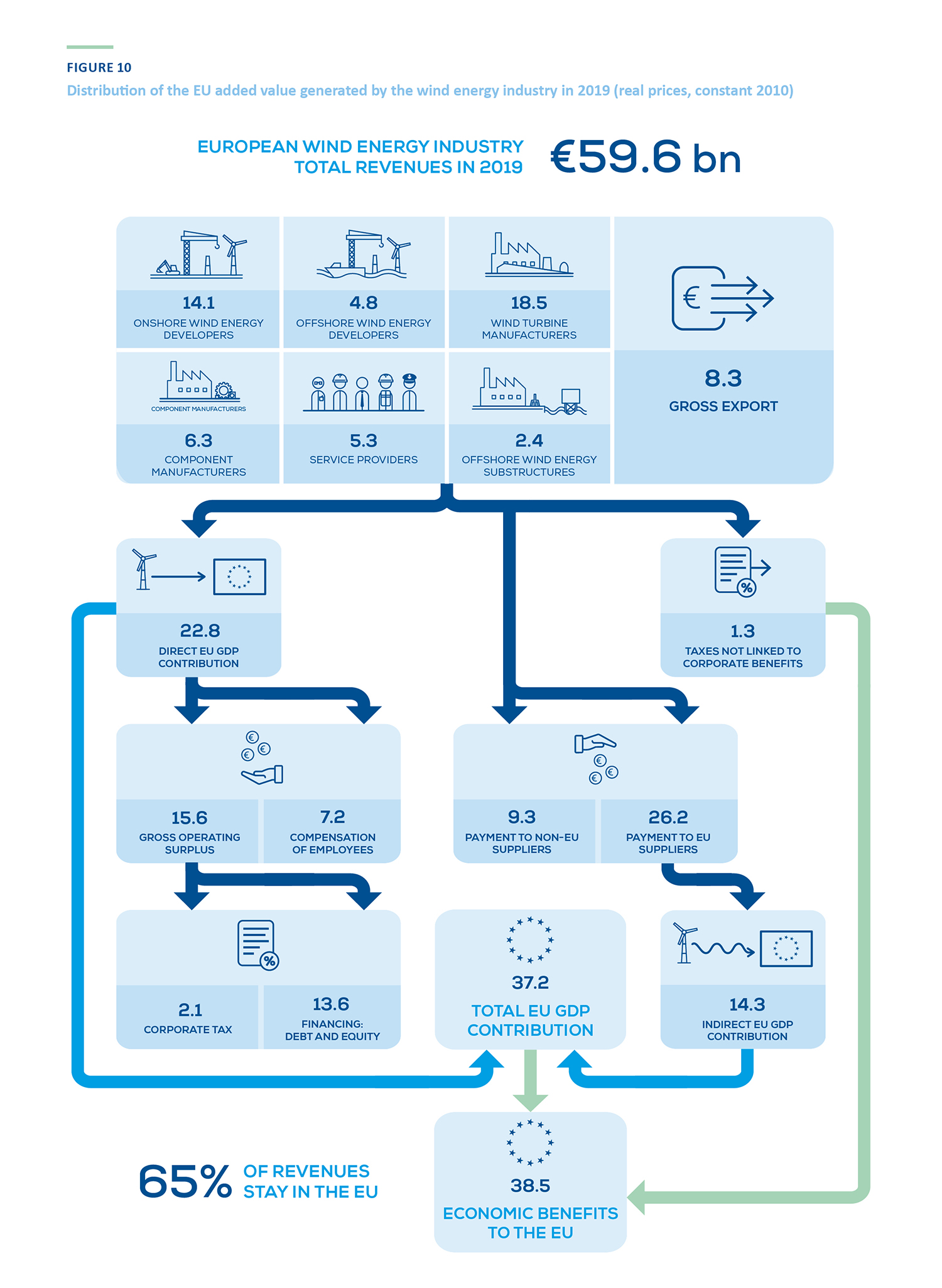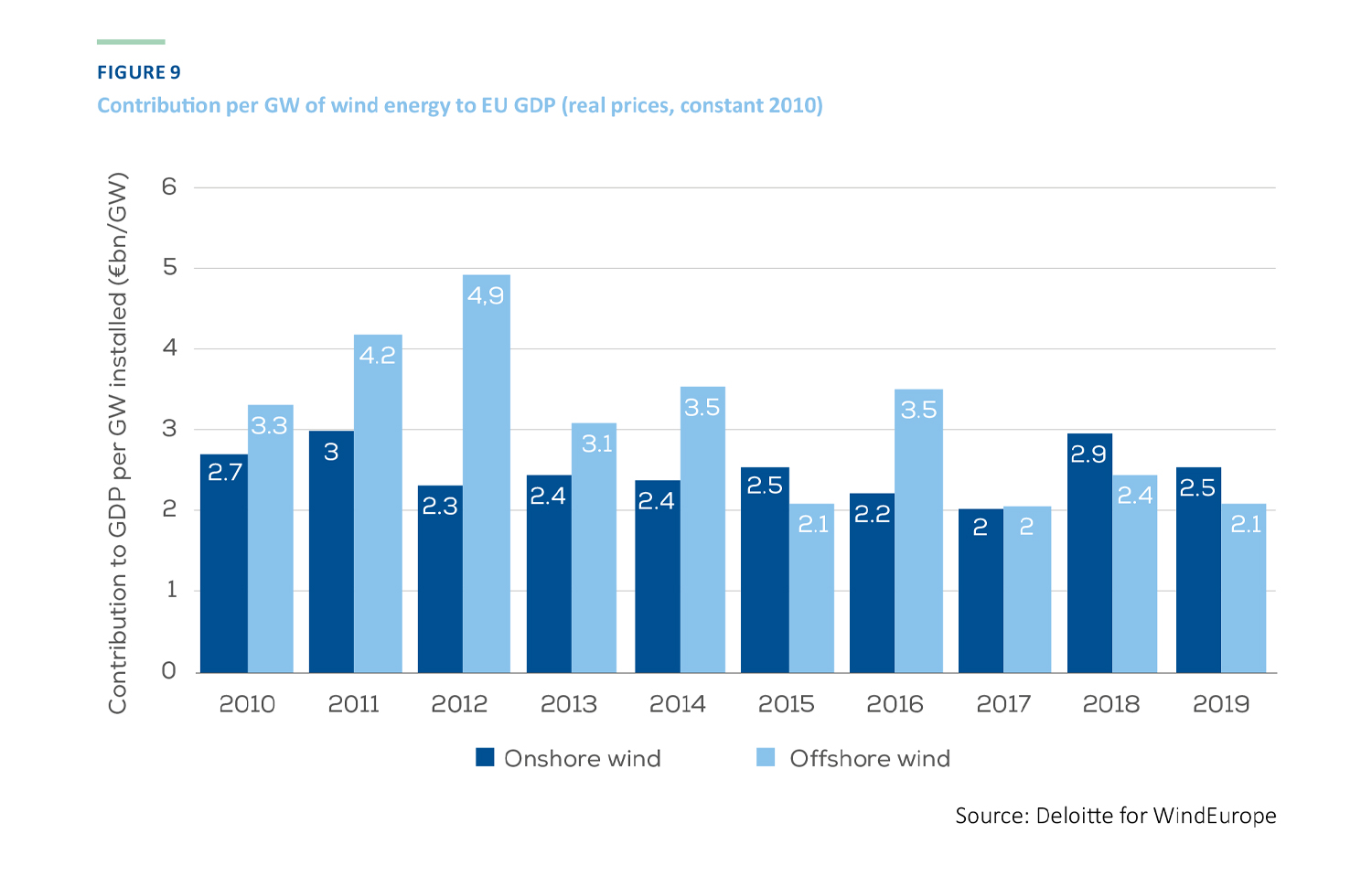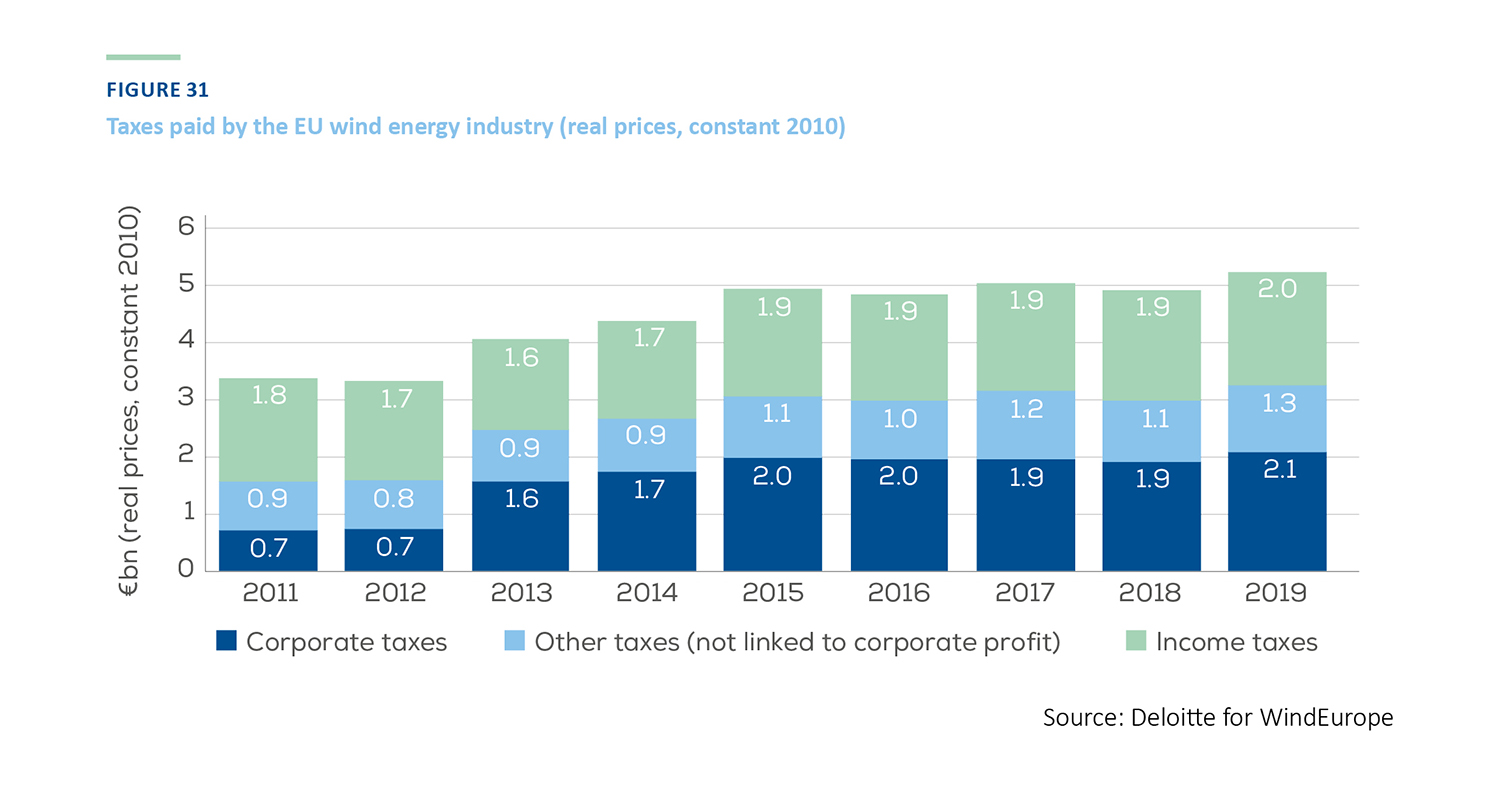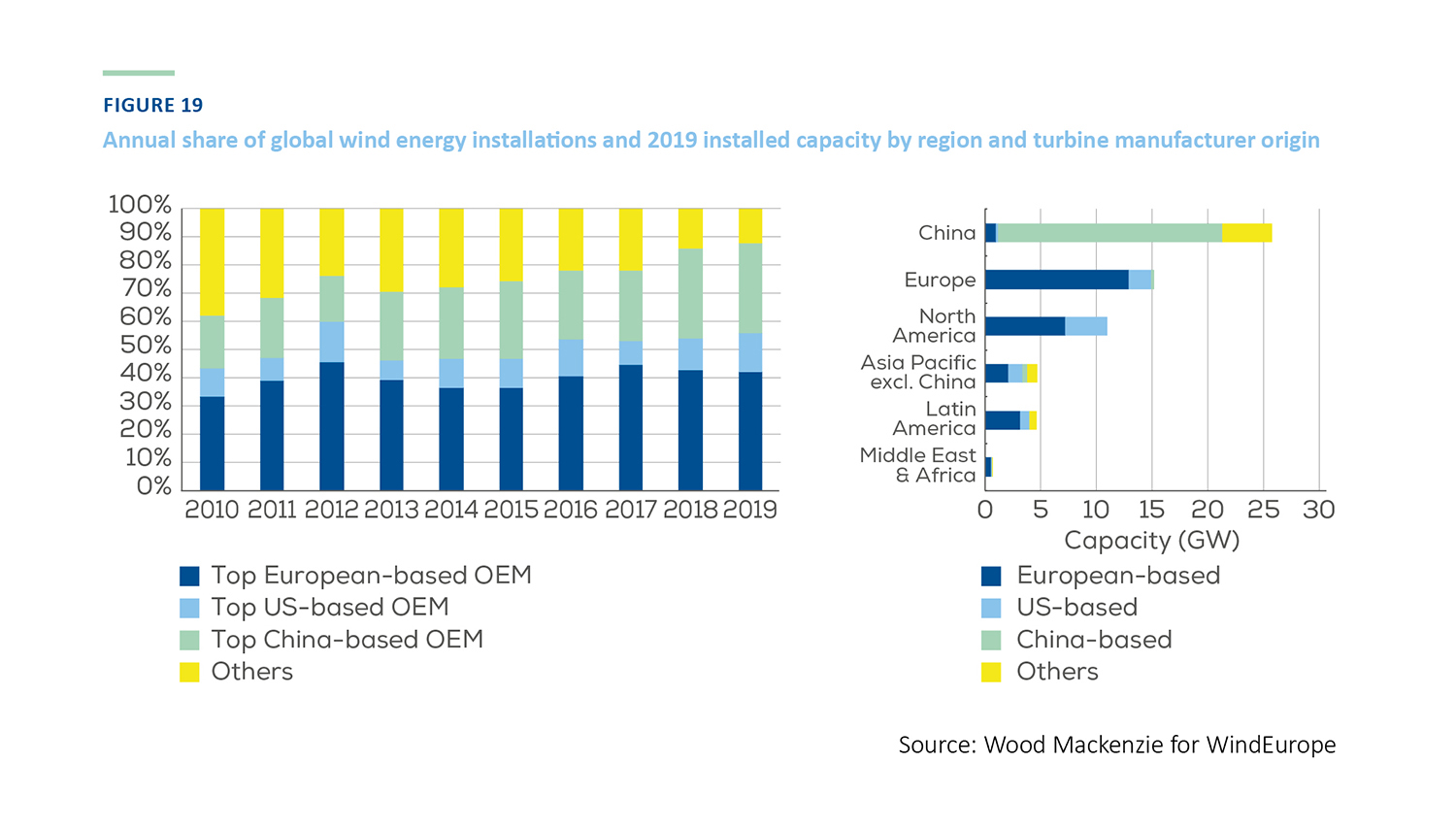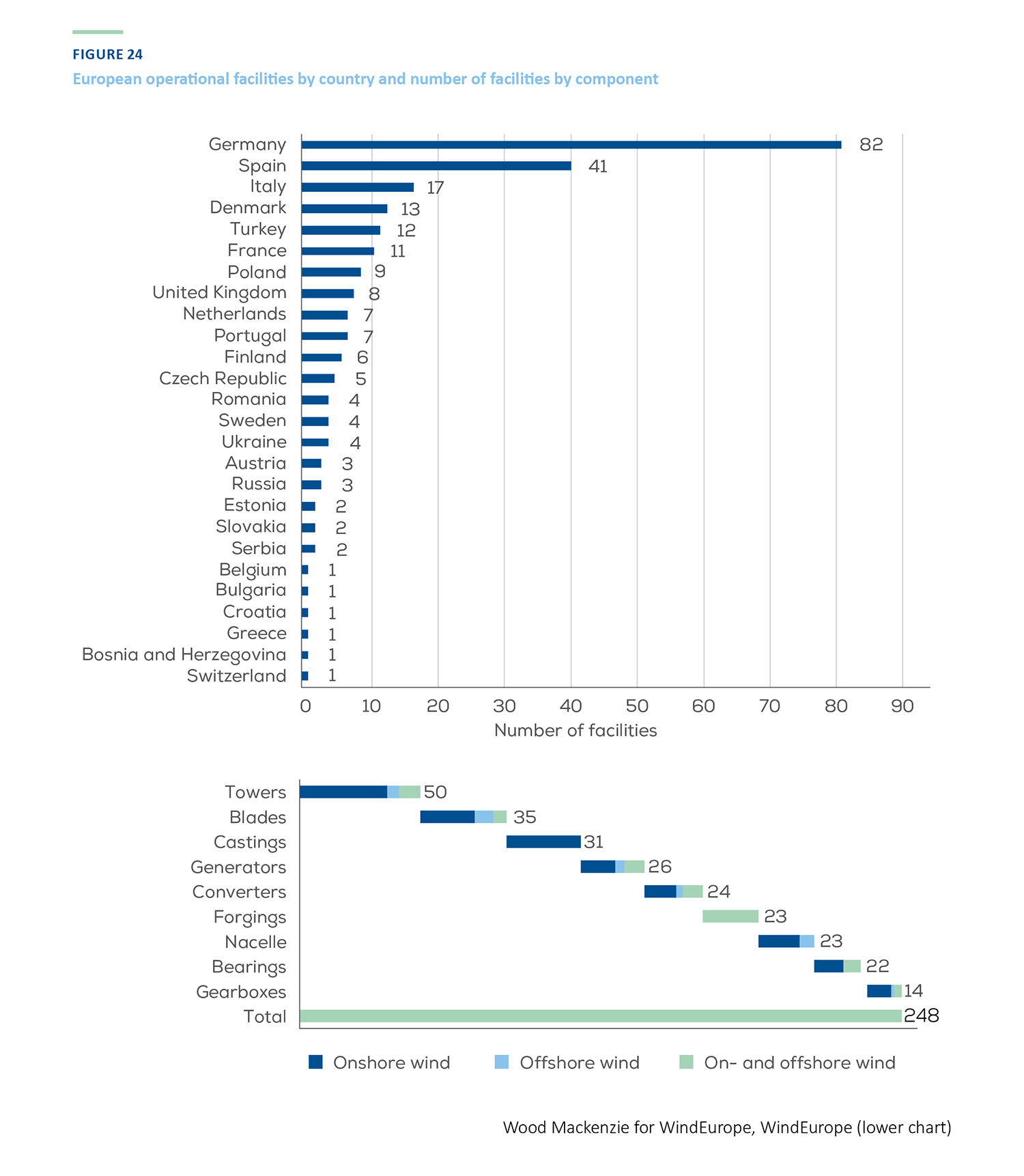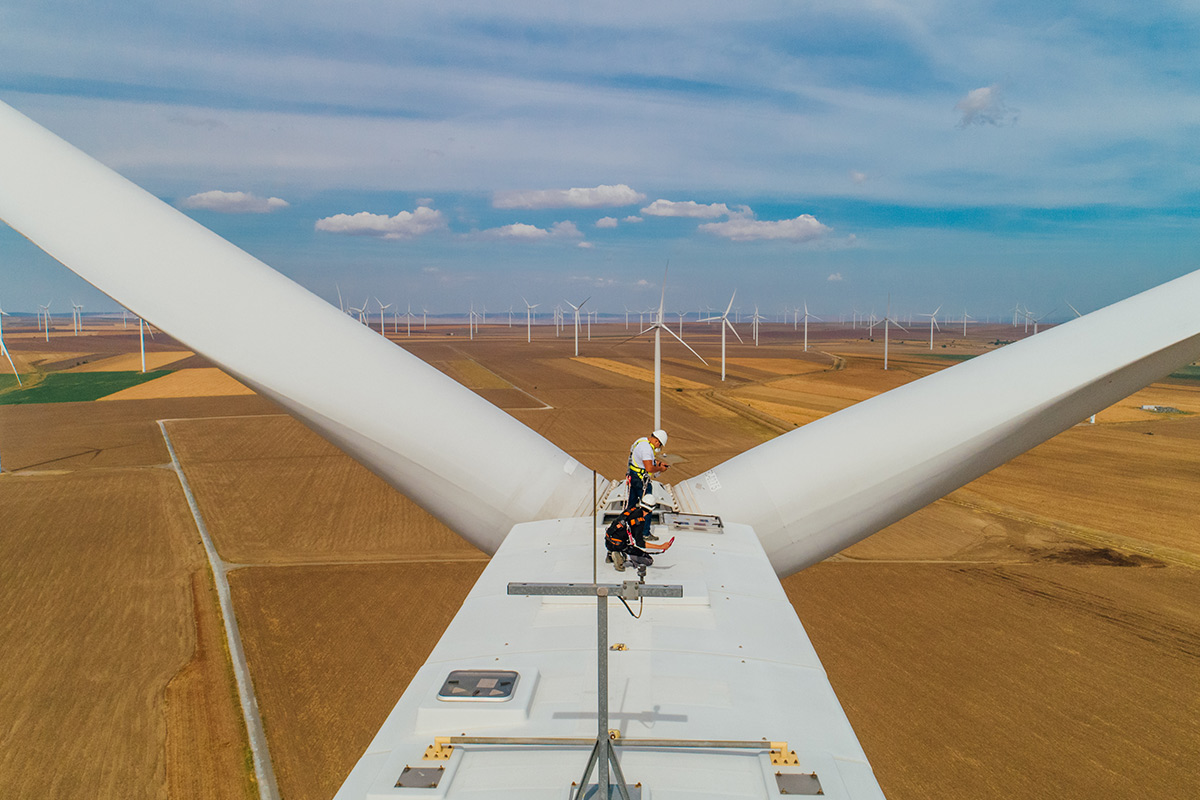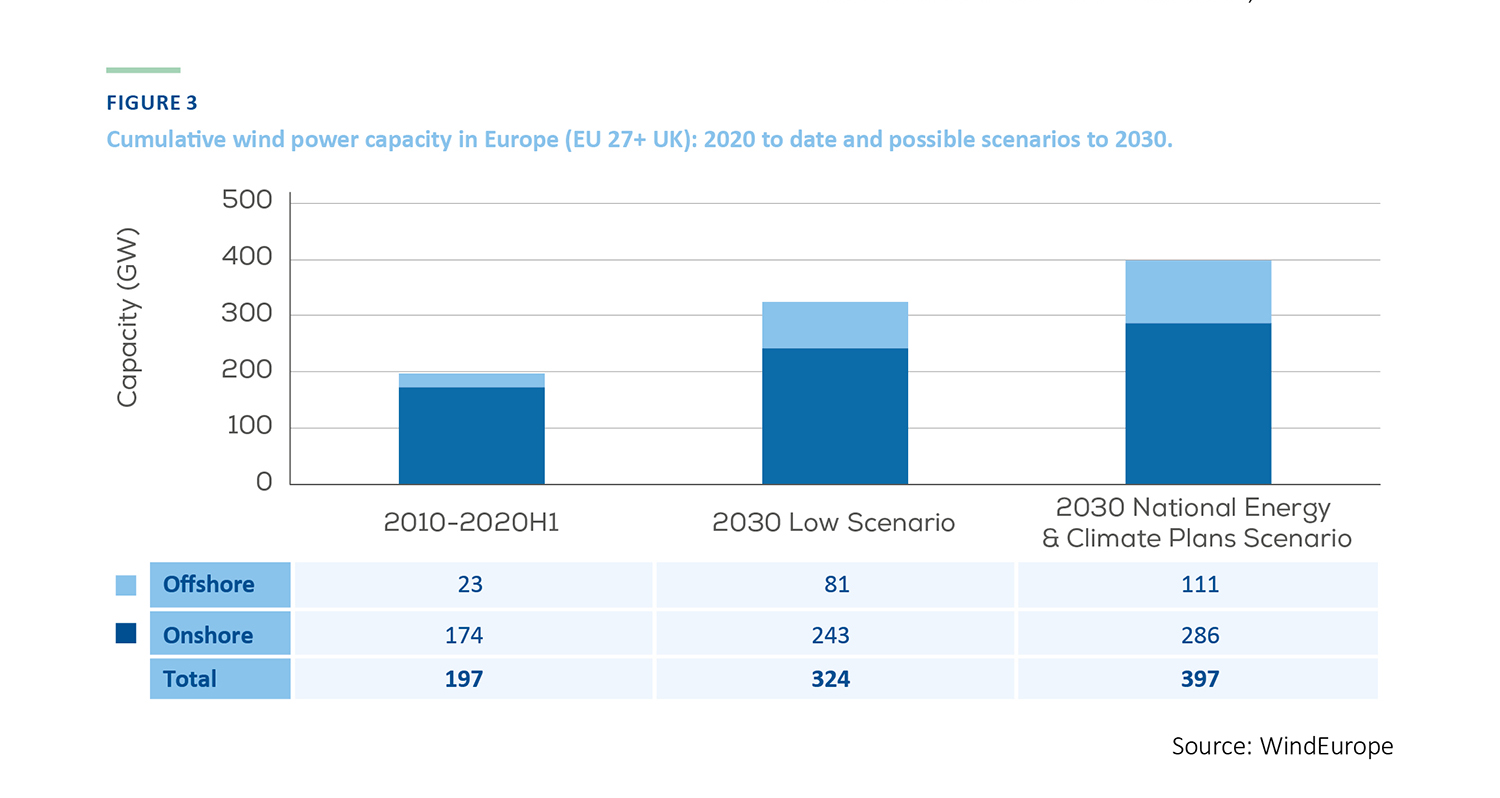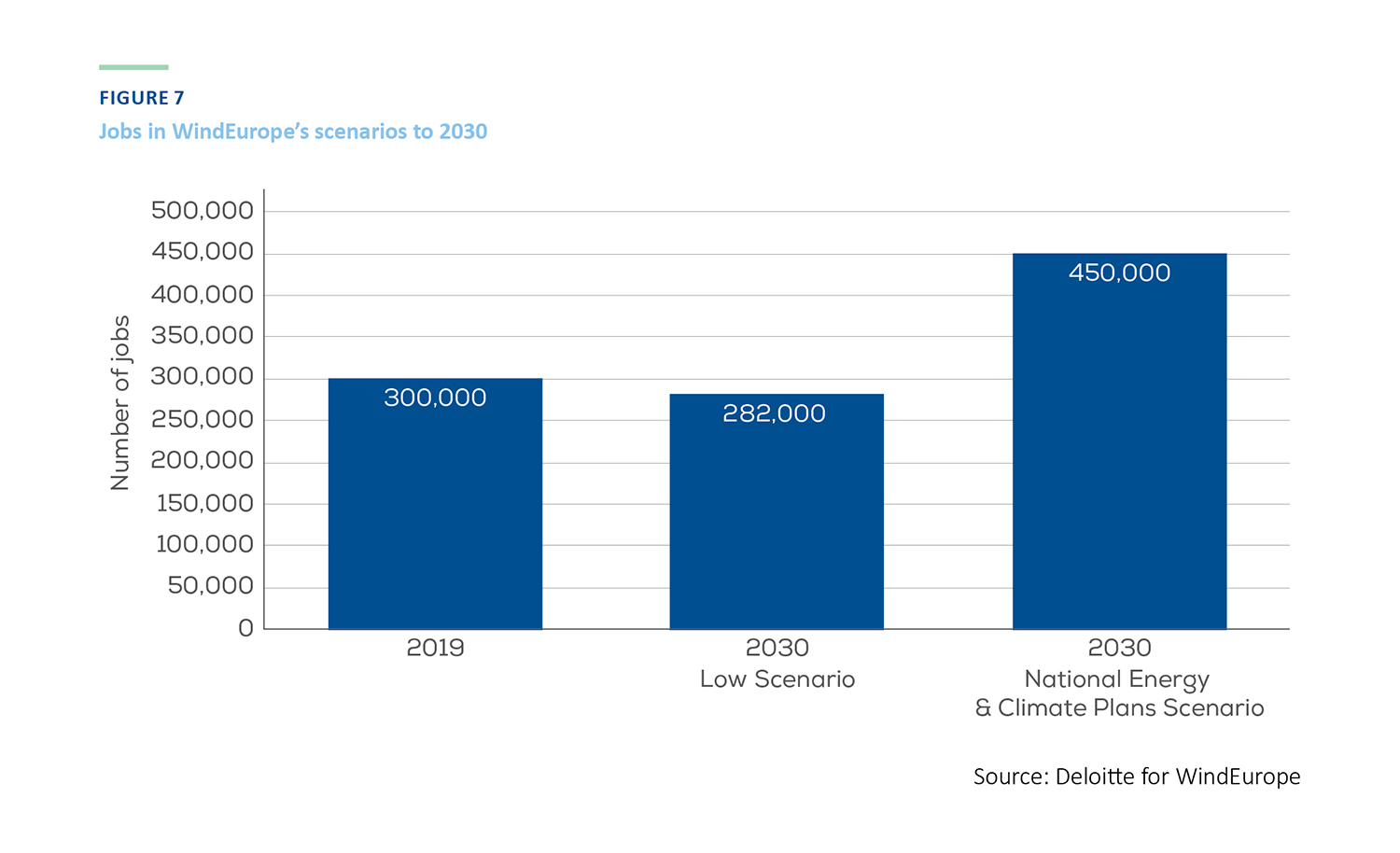Published on 09 October 2020
Overview
This report shows how the wind industry places people at the centre of such a green recovery. It also presents the state-of-play of the European wind industry and its global competitiveness. It demonstrates that the industrial footprint in Europe is ready to expand if there is a strong domestic market and an effective industrial policy. It also covers the socio-economic benefits of WindEurope’s wind energy deployment scenarios to 2030, based on our analysis of the final National Energy & Climate Plans to 2030. And it shows how wind energy can co-exist with local natural protection and other economic sectors like fishing, agriculture, and aviation.
Note: This data has been updated with newer information in a 2023 report by ETIPWind. Click here to read it.
Findings
In 2019 wind energy represented 300,000 jobs in the EU. 75% of these are in onshore wind and 25% in offshore wind.
The European wind industry has an annual turnover of €60bn. 65% of this adds value to the EU economy.
The wind industry today generates €2.5bn of value added to the EU economy for each new GW of onshore wind installed and €2.1bn for each new GW of offshore wind.
The wind energy industry pays €5bn in taxes to the EU economy, including €1bn in local taxes and other payments benefiting communities.
European wind turbine manufacturers have a 42% share of the global market for wind turbines. Of the 10 biggest wind turbine manufacturers in the world, 5 are EU-based.
There are 248 manufacturing sites of wind energy components in Europe, most of which can ramp up capacity.
Wind farms pay €2.3/MWh in local taxes on average.
The benefits created by wind farms are key to many communities. Wind projects activate the local economy, contribute with voluntary payments into community benefit funds, offer benefits-in-kind, and support environmental restoration.
Investing in wind energy will be key to a just transition.
The wind industry promotes happy coexistence with other economic and societal interests such as farming, fishing, biodiversity protection, and military and civil aviation as a necessary condition for the accelerated expansion of wind energy.
Economic Recovery video
Webinar
Scenarios
In the NECP Scenario, European Governments would deliver impeccably their National Energy & Climate Plans (NECPs) totalling 397 GW of wind power by 2030. Wind would employ 450,000 people.

